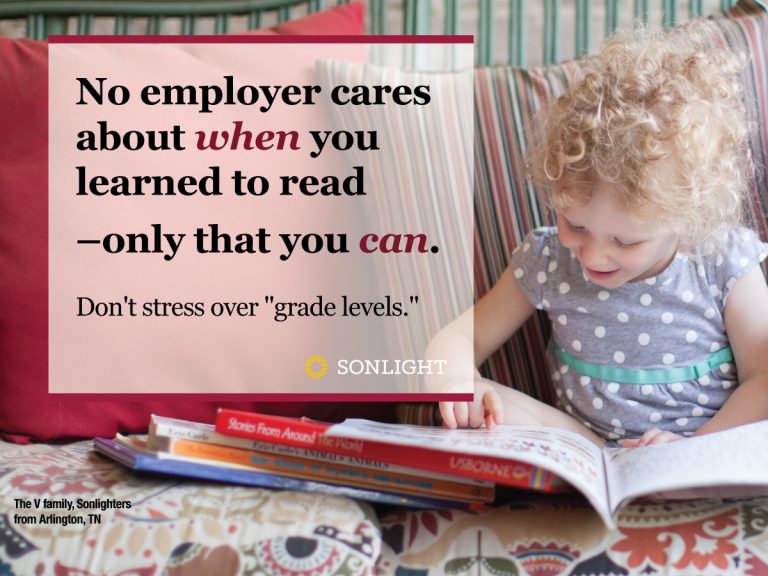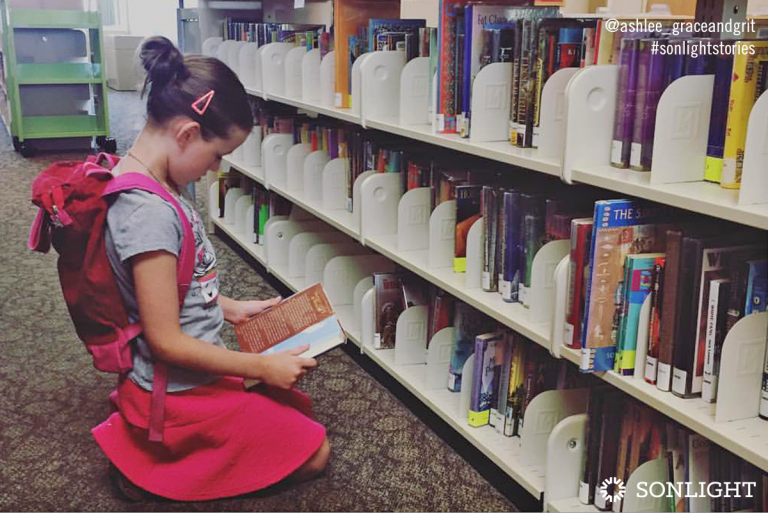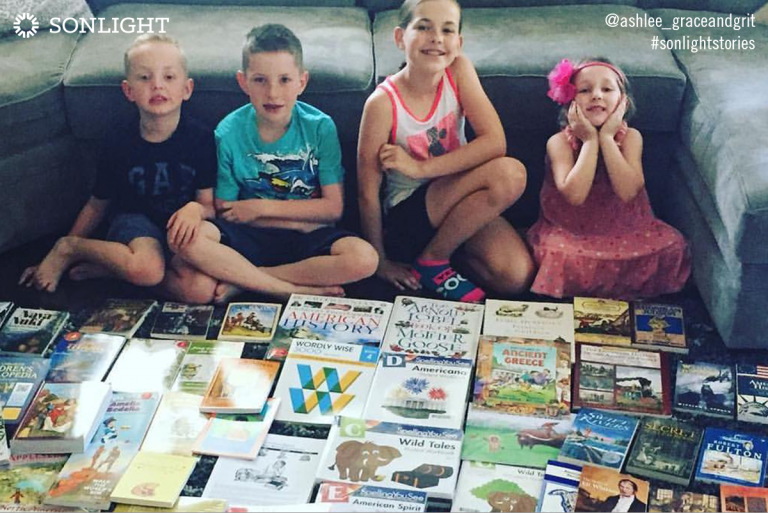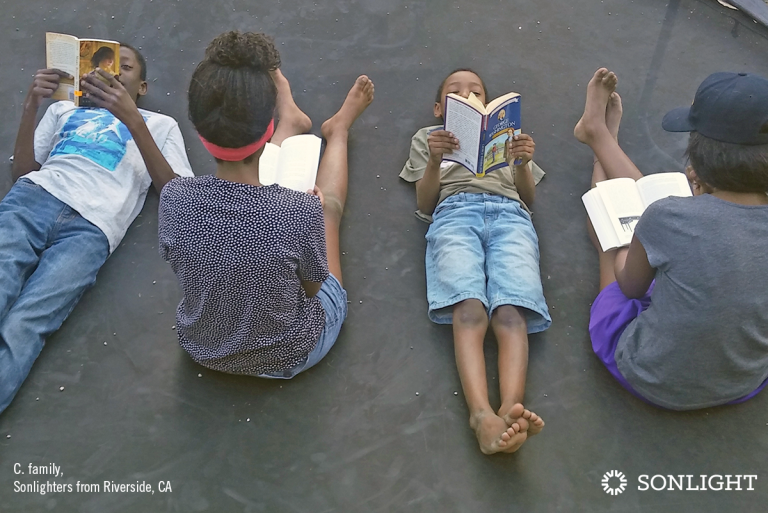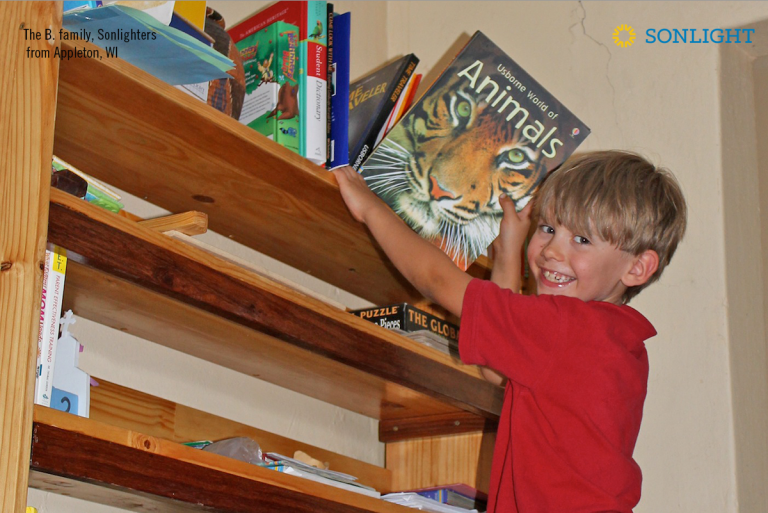
Many families homeschool year-round, going straight through the summer, taking breaks only when needed. But for the rest of us, a long summer break is a great way to rejuvenate. This summer as you are relaxing quietly in the air-conditioning on those days when it is too hot to go outside, think about your summer bucket list. What can you do now to make the transition back to daily homeschool lessons in the fall a bit easier? Here are eight things I plan on doing this summer to make for a smooth new school year.
1. Invest in Summer Self-Care
It’s so easy to let self-care slide while we are taking care of little ones, but summer is a great time to commit to taking care of yourself. If you’ve always wanted to try a new craft or sport, community education classes are an affordable option. So, while your children are at Bible camp or swimming lessons, you might be able to sneak in some time for painting, yoga, pottery, or tennis.
While your children are busy at day camp, invest big chunks of time to relax on your own, doing what builds your spiritual, emotional, and mental reserves:
- a soothing bath
- a trip to the nail spa
- quiet time to meditate
- thrift store shopping
- painting, knitting, or some other creative hobby
You’ll be thankful when things get hectic again in the fall that you took time in the summer to put yourself first.
2. Establish Healthy Summer Eating Habits
Use this summer to get back into the habit of eating healthy. Try new recipes and practice them so that, come fall, your children are used to the new flavors and the recipes are easy to throw together at a moment’s notice. Maybe you want to try your hand at fermenting foods for the healthy probiotics or you want to experiment with a more radical way of eating such as low-carb. Summer is the perfect time to test these new ventures in the kitchen.
Perhaps even go so far as to create a few sample meal plans with ingredient lists, so when things are busy, you have something to fall back on to maintain the healthy habits you started.
3. Savor the Sunshine and Get Exercise
If you’re like me and find less and less time to exercise outdoors as the school year progresses, grab the summer as an opportunity to get back into your routine. The more exercise and fresh air you get now, the easier it will be to keep in the habit during the school year. Your body—and mind—will thank you for it.
Taking good care of you means the people in your life will receive the best of you, rather than what’s left of you. –Carl Bryan
4. Order and Organize Homeschool Curriculum
Don't procrastinate; order early. When your packages come, get familiar with the resources you bought and get them organized on your shelves. If you feel confused, call publishers for advice or make an appointment with the Sonlight advisors to get your questions answered.
After Box Day, I love looking through my new Sonlight History / Bible / Literature and Science programs. Handling the books builds an excitement to get started again. I page through my Instructor's Guides and start making lists on index cards or sticky notes:
- science or craft supplies to find/buy
- ideas for supplemental hands-on projects
- video and field trip tie-ins
It's also during the summer that I take advantage of the back-to-school sales not only to stock up on crayons and notebooks, but also to treat myself to fresh teacher supplies that make organization easier and prettier.
5. Purge Your Home's Clutter
Try to get rid of clutter during the summer months so that your house is easier to keep clean and your supplies are easier to find. Go through cupboards to find items to discard, donate, or declutter. The fewer toys you have, the less time it takes to organize them. When everything has a place, it makes clean-up much easier and allows you to move on faster. Bonus points if you get the kids involved in the purging process!
6. Start Early with Select Summer Activities
If you're someone who tends to get behind easily, you can use the summer to get ahead for next school year. Take 20 minutes a day to work on a school subject. For example, if you listen to an audiobook in the car to and from swimming lessons each day, you could knock out a read-aloud or two before school even starts. Being ahead by a couple of novels will give you wiggle room in your schedule.
You can also do a few minutes of math and language arts or even work through a few of those science experiments you never seem to have enough time for. Find the subjects that are the hardest for you to work into your day and get a head start on those. You will start the school year with a sense of being on top of your game.
7. Read Ahead
If your goal for older children is for more independent learning, use the summer to preview their books so you are aware of sensitive content before it comes up. You may decide there is a book or two that your child isn't ready for, and you will have plenty of time to find replacements or ask for advice in the Sonlight forums.
8. Pray
Use the lighter schedule of the summer to take more time to pray, read devotions, and meditate. Your prayer time will provide a bit of calm as you head into a new school year; you will have assurance that you are on the path God wants for you.
Summer will be gone before you’re ready for it to be, and your mind, body, and soul will thank you for taking better care of it. Likewise, your children will be appreciative of smoother days. Take the time now to take care of yourself and prepare for an amazing back to school in the fall.
Need more help with a smooth back to school transition? Go to SmoothCourse to explore your options.




